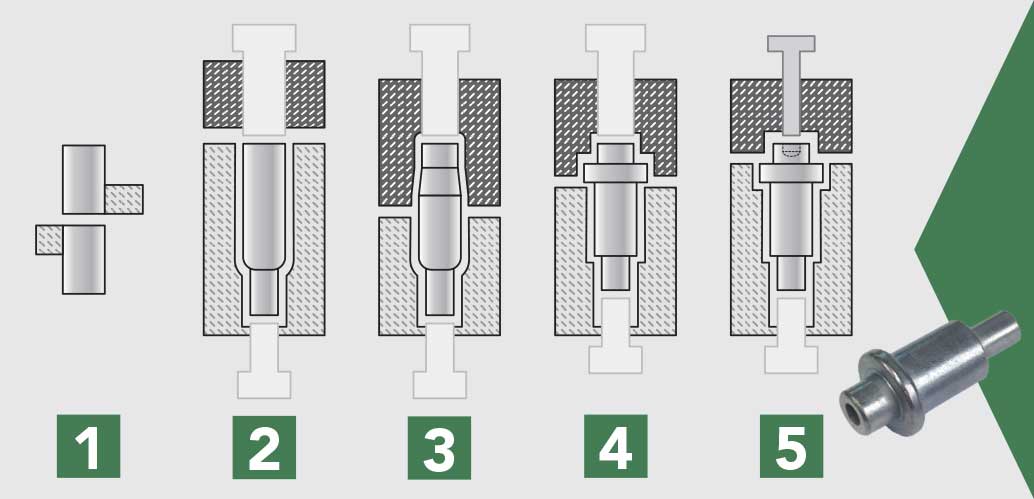How the Cold Heading & Extrusion Works:

Blank is Cut from a coil of wire
Advanced for Forming The blank is advanced into the first station
Ist Form The blank is formed, then advanced to the next station
2nd Form During the same stroke of the machine, the previous part is formed again in the second station. Work is performed on multiple parts to produce one finished part per machine stroke. [Some parts require multiple dies and blows to form the intended design]
Formed Part Completed part is ejected from die
Our cold forming process produces parts at room temperature by forging the material past its elastic limits resulting in a new shape. Cold heading takes wire from a coil, cuts it to a precise length, then progressively forms the blank through multiple dies and punches. This produces one finished product per machine cycle. Through this process, it is possible to produce complex precision parts at high speed with little or no material waste.
Roll forming takes the headed part and through a rolling process creates a thread form, with the finished piece being stronger than cut or machined threads.
Of course, there are times when design features can require precision machining. At WCS, we also have extensive machining experience using a full range of automatic multi-spindle screw machines and CNC machining centers.

